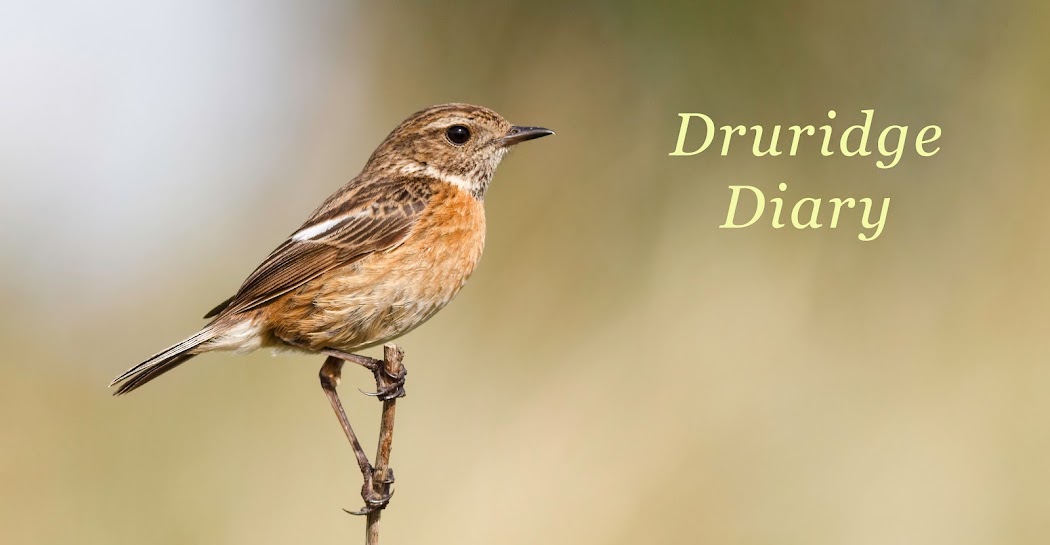Two WeBS counters who were stupid enough to go out on Sunday found themselves lashed by Storm Ciara at a nature reserve in Druridge Bay, Northumberland.
Actually , it wasn't that bad...
Okay it was a bit blowy, especially counting hundreds of ducks with precious-little shelter provided by the Budge screen.
I started counting the grazing wigeon which were the most numerous duck, I got to 294 when they shot up in the air - a reaction to a creamy-crowned
marsh harrier headed their way. All of the waterfowl had relocated to the middle of the widest part of the pool. Back to counting 1,2,3.... 348 - not a bad count for Druridge but nearly one hundred less than last months count.
A second marsh harrier came through - this time an adult male.
Other notable counts included 13 grey heron which were seeking shelter behind the trees, nest-building on hold until the storm died down (whenever that will be), 42 shoveler, 168 teal and 57 curlew. Other notable waders included singles of
black-tailed godwit,
ruff and dunlin.
A third marsh harrier came through - this time a sub-adult male.
Off to the Oddie hide. There were waves on the big pool and all of the birdlife was seeking shelter at the western end. In the field north of the coal haul road, there was a group of
whooper swans, obscured by the hedge, they would require a closer look from the turning circle.
I estimated 44 whooper swans, they were difficult to count as they were also hunkered down out of the wind. They were loosely associated with a flock of 140 Canada geese and 60 pinks.
On our way home we stopped to scan a flock of pinks - over 400 - in the front field and picked up 4
Eurasian white-fronted geese at the back of the flock. There seems to be a few more white-fronts in the county this week.
Full list on eBird











